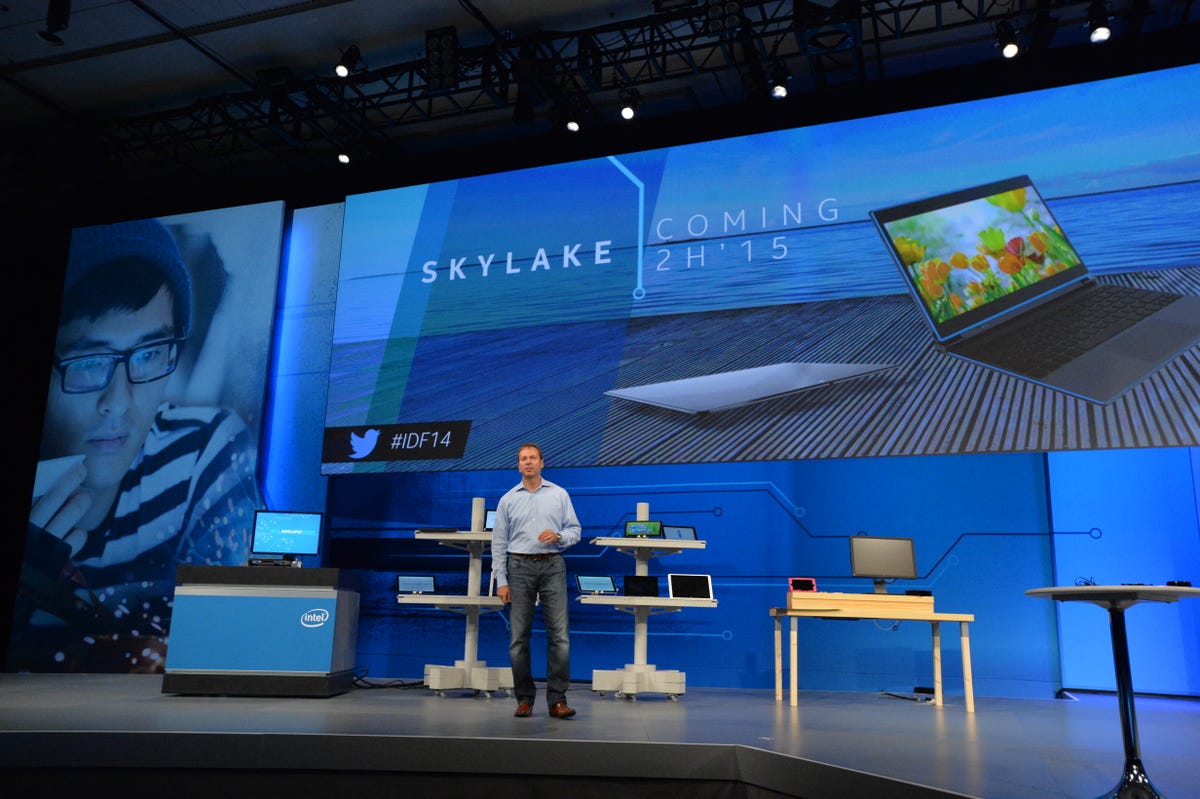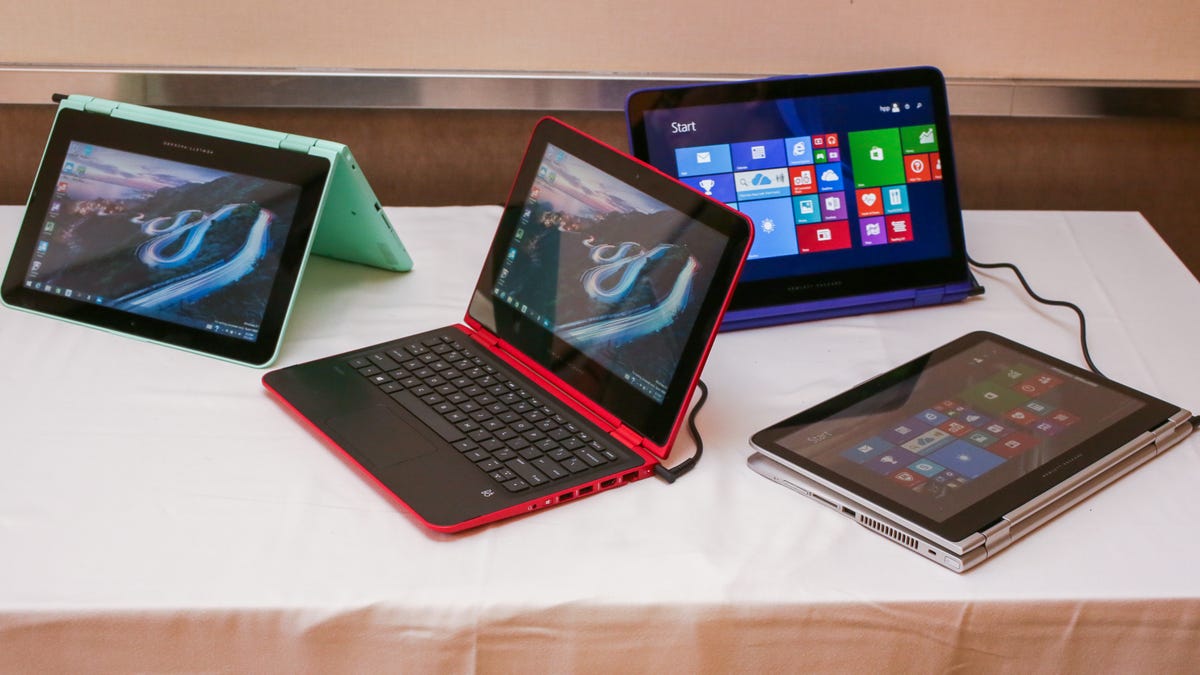
Intel
If it seems like only months ago that we were talking about Intel’s fifth generation of processors for laptops, desktops, hybrids and tablets — also known by the codename Broadwell — that’s because it was. Officially launched in January at CES 2015, those CPUs (the central processing units that provide the “brains” of the PC) offered modest performance boosts and better battery life across a wide variety of mainstream PCs. Those Broadwell chips (including the odd-man-out Core M chip that arrived in late 2014) power the bulk of current Windows PCs and Macs that you can buy right now.
But all that time, the next generation of processors has been waiting in the wings. Because the Broadwell chip generation arrived in PCs later than originally expected, it’s now bumping right up against the following generation, codenamed Skylake. First teased back in September 2014, Skylake is finally expected to launch next month.
Many details of the new chips are still under wraps, but we’ve put together this FAQ to answer some of the bigger questions.
What’s new in Skylake?
Until we get a chance to benchmark PCs with the new CPUs, we won’t know for sure how this new generation compares to previous ones, but it’s a safe bet to say that we’ll most likely see a modest improvement to both application performance and (in mobile products) battery life.
We may also see a push towards ” wire-free” computing, with many Skylake systems supporting wireless charging solutions. Intel is reportedly working on getting automakers, hotel chains and coffee shops to install the charging stations. Also coming to some Skylake systems is Thunderbolt 3, a faster version of Intel’s data connection standard, this time using a standard USB-C connection.
When are the first Skylake chips expected to be officially available?
Nothing is yet official, but rumors (and common sense) point to the first Skylake processors and PCs surfacing in August. Look for announcements at Gamescom, a European gaming show in Cologne, Germany, and the Intel Developer Forum, a trade conference in San Francisco.
As with previous generations of Intel Core i-series CPUs, the highest-end Core i7 chips, intended for gaming and professional PCs, will launch first, with more mainstream Core i5 and Core i3 ones to follow. So it might be closer to October before you start seeing Skylake chips in more workaday laptops at Best Buy and Amazon.
Is Skylake’s release pegged to the availability of Windows 10?
No, Windows 10 launches July 29, so it’ll beat the new chips by at least a few days. But expect only high-end Core i7 desktop CPUs at first, with mainstream and mobile chips following months later. However, there should be no compatibility issues between the new Microsoft OS and the new Intel processors.
Why is Skylake arriving so soon after Broadwell?
Those fifth-generation Broadwell Core i-series chips took longer to be released than originally expected, and longer to work their way into shipping PCs. Rather than push Skylake back a similar amount, Intel is keeping to its original timeline, which means Broadwell gets a shorter-than-expected amount of time as the newest generation of processor.


Sarah Tew / CNET
Is Skylake a major step forward?
Arguably, at least in terms of what you can expect from everyday performance. Intel likes to divide its chip updates into “tick” and “tock” levels. The “tick” represents a major physical, structural change, such as moving to a 14nm (which refers to the size of a transistor on the chip) manufacturing process, as happened with the fifth-gen Broadwell chips. That was an improvement on the prior 22nm chips that appeared in 2013, codenamed Haswell. The “tock” represents new features on top of the previous generation’s size change, which is the case for Skylake. There’s been some debate (see the comments section below) on which is truly more important, the tick or the tock.
Here’s what Intel says: “With every tick cycle, look for Intel to advance manufacturing process technology and continue to deliver the expected benefits of Moore’s Law to users…In alternating tock cycles, expect Intel to use the previous tick cycle’s manufacturing process technologies to introduce the next big innovation in processor microarchitecture.”
Interestingly, the purported post-Skylake Intel chip generation, code-named Kaby Lake, is also keeping the same 14nm process, bumping the expecting shrinkage to 10nm manufacturing to the subsequent generation. That 10nm chip is currently code-named Cannonlake, and is now expected in late 2017. One could say Intel plans on releasing two tock generations of chips in a row. So, call it tick/tock/tock — Broadwell in early 2015, Skylake in late 2015 and Kaby Lake planned for next year.
Should you hold off on purchasing a new PC or Mac?
That answer is a qualified no, as we don’t expect a massive change in mainstream performance from Broadwell, the current generation of Intel chips, to Skylake. And again, it will likely be several months for the new parts to come to your preferred brands.
More to come
We’ll update this FAQ with more information as the new chips come closer to release, and CNET Labs will test and report on Skylake-powered PCs as soon as final hardware is available.




